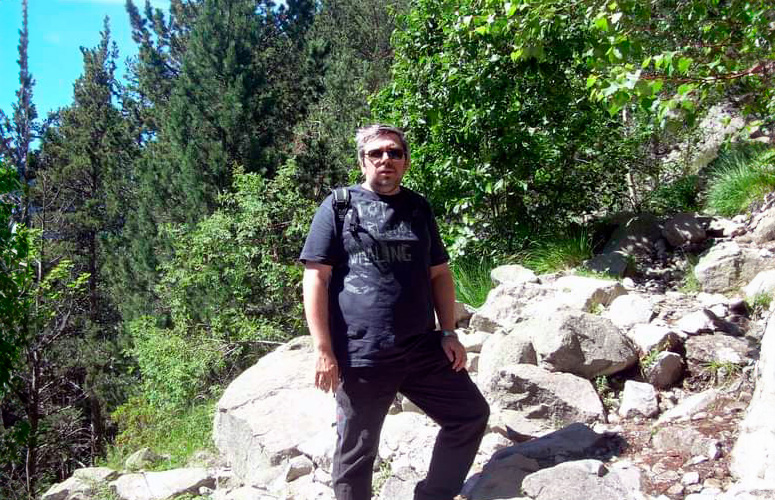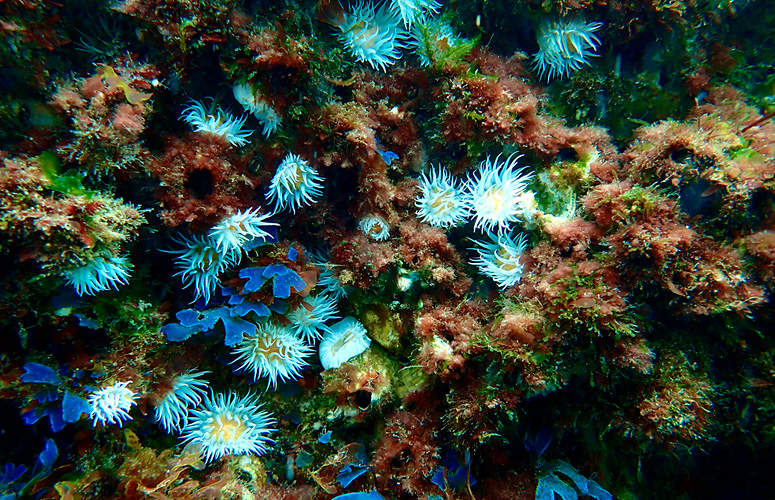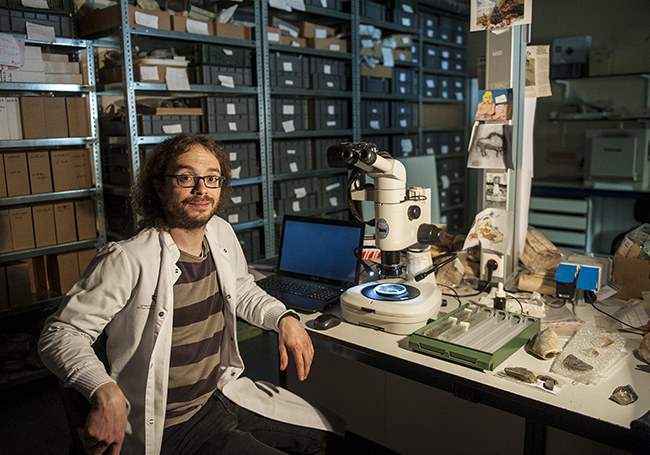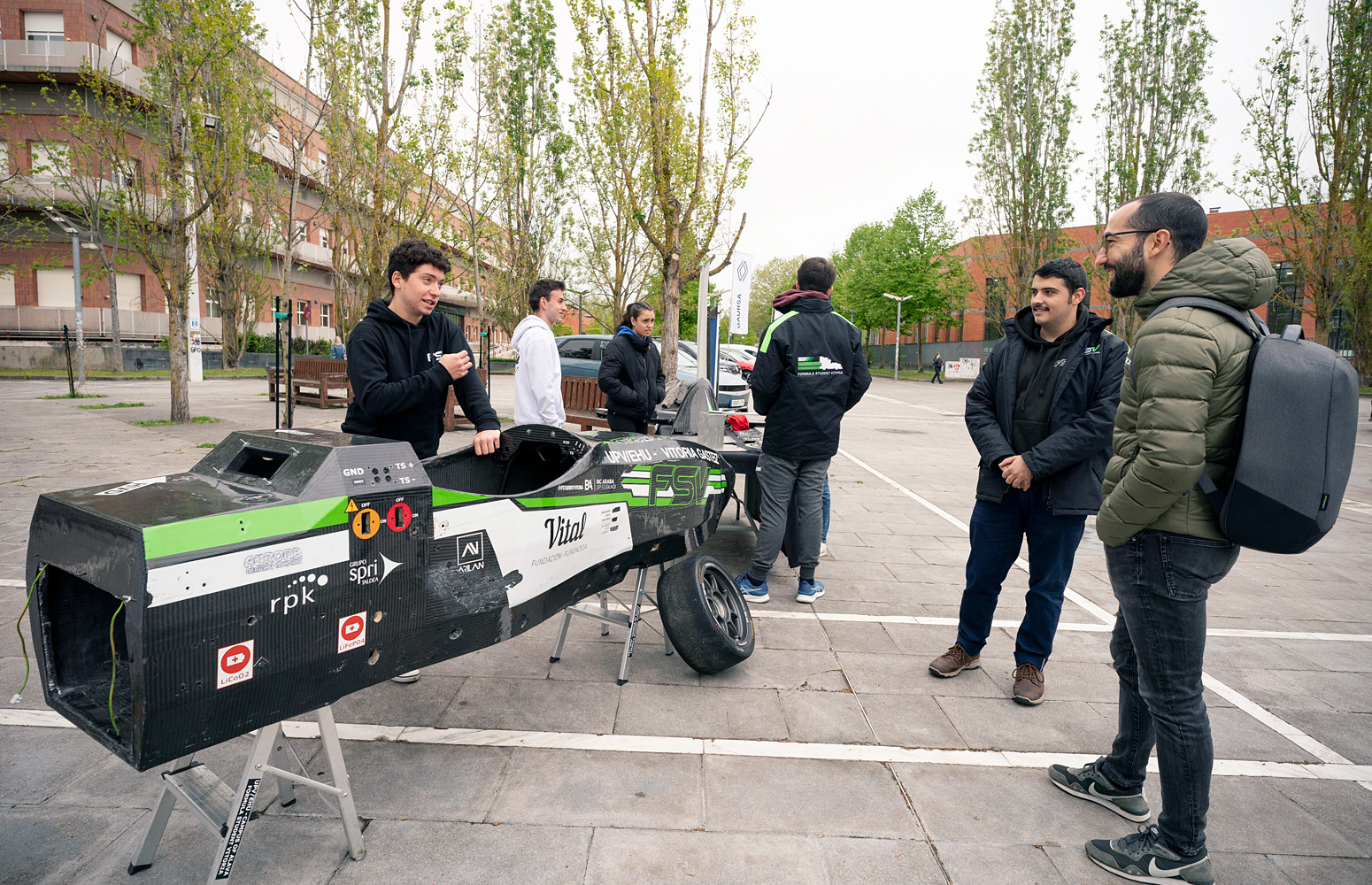The study establishes the first methodology for the purposes of understanding and characterising quartzite in archaeological contexts, which will allow the economy organised around this stone by prehistoric societies that inhabited the Cantabrian Region to be understood.
-

In memoriam: Arturo Muga
-

Violeta Pérez Manzano: «Nire ahotsa ijito bakar batengana iristen bada eta horrek inspiratzen badu, helburua bete dut»
-

In memoriam: German Gazteluiturri Fernández
-

Azukrea eta edulkoratzaileak. Zer jakin behar dut?
-

Itsasoaren gainazalaren tenperatura-igoerak aldaketa sakonak eragin ditu makroalgen komunitateetan
Geo-archaeological characterization of quartzite
The research by the UPV/EHU-University of the Basque Country will enable an insight into Palaeolithic societies to be gained on the basis of the use of this material
- Research
First publication date: 06/06/2018

The scientific community is fairly cognizant of the fact that flint is the stone most widely employed by Palaeolithic societies in the Eastern Cantabrian Region, but hardly anything is known about quartzite, the main material in the rest of the Cantabrian Region and the Iberian Peninsula. In the article now published in the journal ‘Archaeometry’, an UPV/EHU group has characterised, from a geo-archaeological perspective, this second lithic raw material within the archaeological record at Palaeolithic deposits.
In the article a methodology is established to be able to indicate in the future where prehistoric groups sourced supplies of quartzite from (in the regions where there is very little flint). “As this methodology is expanded, we will be finding out the characteristics of each outcrop of this raw material and we will be able to complete the “economic” map of the Palaeolithic (right now virtually empty except in the Basque Country and Catalonia) with the remaining regions of the Iberian Peninsula,” said Alejandro Prieto, co-author of the article. So the presence of a characteristic quartzite from an outcrop in a valley hundreds of kilometres away, for example, would reveal that mobility by the human groups that carried it. By multiplying the number of observations it will be possible to map the mobility of prehistoric populations between the outcrops of raw material and the deposits in which these worked remains were left behind after the material had been used.
As pointed out, on the Cantabrian Coast, the geographical area to which the work is restricted, quartzite is the second lithic raw material in terms of quantity. The importance in the archaeological record is even greater in the central and western areas of the Cantabrian region, and also in the ancient Palaeolithic, specifically in the Lower and Middle Palaeolithic. So the characterisation of this material is opening up a new window onto knowledge about Palaeolithic societies, from the understanding of the supply, transformation and use mechanisms of one of the most important resources in that period.
To understand and characterise archaeological quartzite, 17 samples of the materials from the El Habario and El Arteu deposits were selected. The two collections of lithic industry have been characterised as Mousterian, clearly associated with the Middle Palaeolithic (150,000-40,000 BP) and carved by Neanderthal populations. The two deposits are located in the west of today’s province of Cantabria in an area of great geographical variability. The first is located on a plateau on the north-eastern spurs of the Picos de Europa and is adjacent to some small conglomerates with quartzite pebbles. The second is located in the Desfiladero de la Hermida (Hermida Gorge), in an area with a steeper orography, surrounded by limestone strata and is fairly close to the Deva river.
The methodology used was based on the application of petrography, digital image processing, and X-ray fluorescence. These three techniques made it possible to characterise the textures of the thin sheets and quartz grains that form the quartzite; to get to know the dimensions, shapes and orientation of the quartz grains; to get to know the minerals that together with the quartz make up the quartzite; and to characterise the geochemical composition of the quartzite. “The results of this work have enabled us to understand the genetic processes by which the quartzite was created and formed, and to detect various formation atmospheres. These range from the purely sedimentary ones (build-up of quartz grains) to other clearly metamorphic ones (creation of new quartz grains through recrystallization), including more advanced gradation of diagenetic mechanisms and deformation,” explained the researcher.
The understanding of these processes and their contextualisation has made it possible to establish six types of quartzite, which have been used to partly understand the record of both deposits and confirm complex mechanisms to acquire and manage quartzite. So the dual acquisition (in river conglomerates and deposits) of lithic resources enables the mechanisms of mobility and use of a range of resources (middle mountain areas and valley floors) to be observed; these indicate patterns of inter-annual movements that persist even today in rural and livestock environments. The mobility of Neanderthal populations and the transport of tools have been verified and so has the use of a host of quartzite types by the Neanderthals. On the other hand, the preferred uptake and use of highly deformed or metamorphic quartzite types, owing to their advantageous suitability for carving and use, prompts one to consider the “modern” and “complex” behaviour patterns of the Neanderthal populations.
Additional information
Alejandro Prieto is a PhD student in the Department of Geography, Prehistory and Archaeology of the UPV/EHU’s Faculty of Arts and is currently writing up his PhD thesis on the subject. The paper published in Archaeometry, ‘Defining and characterizing archaeological quartzite: sedimentary and metamorphic processes in the lithic assemblages of El Habario and El Arteu (Cantabrian Mountains, Northern Spain)’, was produced in collaboration with Iñaki Yusta of the Department of Mineralogy and Petrology, and Álvaro Arrizabalaga of the Department of Geography, Prehistory and Archaeology at the UPV/EHU.
Bibliographic reference
- Defining and Characterizing Archaeological Quartzite: Sedimentary and Metamorphic Processes in the Lithic Assemblages of El Habario and El Arteu (Cantabrian Mountains, Northern Spain)
- Archaeometry (2018-04-22)
- DOI: 10.1111/arcm.12397


